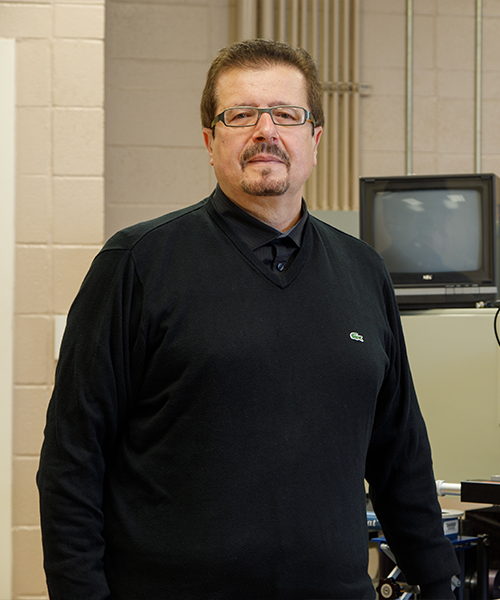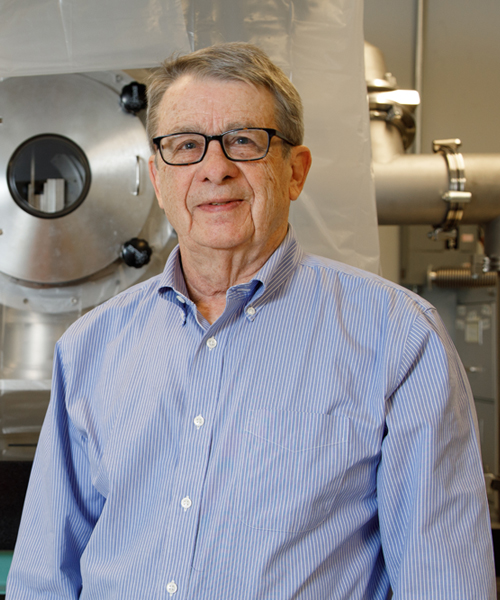TcSUH EventS

Special Seminar
Crystal Growth of REBCO High Temperature Superconductor by Top-Seeded Solution-Growth (TSSG), Top-Seeded Melt-Growth (TSMG), and Liquid Phase Epitaxy (LPE)
by: Prof. Xin Yao
Date: Tuesday August 30, 2011
Time: 12:00 pm – 1:00 pm
Location: Houston Science Center – Building 593 — Room 102
Overview
For fundamental study and practical application, the crystal growth of REBCO (RE=Nd, Sm, Gd, Y) high temperature superconductors has been investigated in our crystal growth lab. The progress is reviewed on three aspects. 1) Single crystal of REBCO with large size, stoichiometry chemical composition control and excellent superconducting properties by Top-Seeded Solution-Growth (TSSG);2) Novel seeds and phase relation study on the growth of REBCO single domain bulk with the large size and high performance by Top-Seeded Melt-Growth (TSMG); 3) Orientation transition (out of plane, in-plane alignment), its mechanism and film properties by Liquid Phase Epitaxy (LPE). The phase formation and growth mode in various RE-Ba-Cu-O systems are discussed.
Download : Event PDF
Back to TcSUH News & Events
Special Seminar
Magneto-Optics of Dirac Fermions in Graphite
by: Dr. Milan Orlita
Date: Tuesday August 02, 2011
Time: 4:00 pm – 5:00 pm
Location: Houston Science Center – Building 593 — Room 102
Overview
Results of magneto-spectroscopic investigations of Dirac-like electronic states in various graphene-based materials, such as multilayer epitaxial graphene, bulk graphite or decoupled graphene flakes on graphite substrates, will be reported. Landau level spectroscopy will be shown to be a suitable method to study the electronic band structure of these systems as well as to evaluate their electronic quality in terms of the carrier mobility or scattering time.
Back to TcSUH News & Events

Bi-Weekly Seminar
Shedding Light on Iron-Chalcogenide/Pnictide Superconductors by Inelastic Scattering
Date: Friday July 22, 2011
Time: 12:00 pm – 1:00 pm
Location: Houston Science Center – Building 593 — Room 102
Overview
Iron-based superconductors are materials with many intriguing properties as competing magnetic and superconducting orders, non-phonon mediated pairing mechanism, direct substitutional doping into the active pairing layer, and metallic multiband nature of the parent compounds. Although there is no a “silver bullet” approach to such a complexity, the light scattering techniques have proven to be a useful tool for studying these superconductors. Inelastic scattering of light from solids is commonly known as Raman scattering by phonons. The scattering process, however, always proceeds through electrons and can also involve a broad range of elementary excitations as intra-ionic electronic transitions (crystal-field excitations), intra and inter-band electronic transitions, magnons through spin-orbit coupling, and electronic pair-breaking excitations in superconductors. I will address the achievements, challenges, and perspectives in studying iron chalcogenides and pnictides by a combined experimental Raman scattering and first-principles simulation approach.
Back to TcSUH News & Events

Bi-Weekly Seminar
Image Noise in Helium Lithography
Date: Friday June 24, 2011
Time: 12:00 pm – 1:00 pm
Location: Houston Science Center – Building 593 — Room 102
Overview
A distinctive feature of resist exposure by energetic helium ions or neutral atoms is that critical exposure densities are very low, about 100 times smaller than for electrons. Thus, particle distributions are sparse, leading to significant statistical fluctuations in the deposited energy density even in Polymethylmethacrylate (PMMA), a relatively insensitive, non-chemically amplified resist. The impact is first seen as roughness in the region of partial exposure on a feature’s edge where the bunching of just a few particles may cause the energy density to shift above or below the resist development threshold. As feature size is reduced, however, fluctuations in the total number of particles (shot noise) become larger as a fraction of average dose, potentially causing over and under exposure of the entire feature. This talk presents an integrated study of image noise in helium lithography that compares shape variations in neutral particle mask images with the predictions of a Monte-Carlo model. The model acco unts for the following: 1) Poisson statistics of the particle emission process, 2) the variable spatial distribution of the particles within the aerial image, 3) the effect of scattering on the particle distribution at various depths in the resist, and 4) smoothing of the deposited energy distribution by exposure and development processes. Proximity lithography experiments were carried out using 10 keV neutral helium atoms in 20 nm thick PMMA resist under conditions of 12.7 nm [FWHM] penumbral image blur. The energy smoothing function is assumed, based on previous experiments, to be Gaussian and its standard deviation s treated as a free parameter. Model predictions of the power spectral density of line edge roughness agree with experiment for σ =5.0 ± 0.5 nm. The model predicts that using a resist with a critical dose 20 times higher than PMMA and reducing penumbra to 0.5 nm [FWHM], for example by reducing the proximity gap, would reduce shape fluctuations to less than 0.5 nm [FWHM] for dense 10 nm dot arrays.
Back to TcSUH News & Events

Special Seminar
How Superconductors Became Practical: A Walk Through the History and Science of Flux Pinning
by: Prof. Herbert C. Freyhardt
Date: Monday June 20, 2011
Time: 11:30 am – 1:00 pm
Location: Houston Science Center – Building 593 — Room 102
Overview
Since the investigation of flux pinning in superconductors in the early sixties, a considerable amount of work has been accumulated in this field to understand the underlying principles of fundamental interaction mechanisms of flux lines with pinning defects as well as the summation problem for a well characterized arrangement of flux lines. Pinning is and remains one of the essential problems to tailor and optimize the current carrying capability of practical low-Tc or MgB2 superconductors and to make them viable for application. For high-temperature superconductors it is even more challenging because now one has to deal with highly anisotropic superconductors with complex flux and flux line structures which strongly govern the essential irreversibility fields and with a pinning landscape which can be tailored to a large extent to improve engineering critical currents. The challenge is to understand the mechanisms which govern current limitation and to further increase flux pinning and critical current densities in the presently known HTS materials at the operating fields and temperatures, e.g. for devices in electrical and power engineering, to pave the way for a widespread application.
Back to TcSUH News & Events
